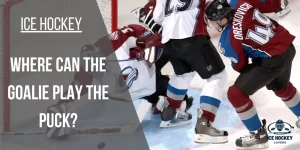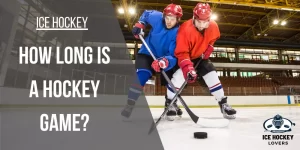Elbowing Hockey: What is Elbowing in Hockey?
Ice hockey is an exhilarating sport that combines skill, strategy, and physicality. One aspect of the game that players and fans should familiarize themselves with is elbowing.
In this comprehensive guide, we will delve into the intricacies of elbowing in ice hockey, including its definition, penalties, techniques, and impact on the game.
Table of Contents
What is Elbowing in Ice Hockey?
Elbowing is a penalized action in ice hockey involving players forcefully using their elbows to strike an opponent. It is considered illegal body checking and is strictly regulated to maintain player safety and fair play. The primary purpose of elbowing is to gain an unfair advantage over the opponent or to intimidate them physically.
The Rules and Penalties Associated with Elbowing
In ice hockey, specific rules are in place to regulate player conduct, including rules related to elbowing. According to the official rulebook, Rule 59.1 states,
A minor or major penalty, at the discretion of the referee based on the severity of the infraction, shall be imposed on a player who elbows an opponent.
The severity of the penalty depends on various factors, such as the force applied, the intent behind the action, and the resulting injury to the opposing player. A minor penalty results in the offending player serving two minutes in the penalty box, while a major penalty leads to a five-minute penalty and potential ejection from the game. In some cases, severe elbowing incidents can result in additional disciplinary actions, including fines and suspensions.
Techniques of Elbowing
Elbowing can occur during various situations in an ice hockey game. Some standard techniques used by players to execute an elbowing maneuver include:
- The Shoulder Drop: This technique involves dropping the shoulder to initiate contact with the opposing player’s upper body while extending the elbow for maximum impact. It is essential to note that using the elbow excessively or targeting the head or face of an opponent is dangerous and strictly prohibited.
- The Open-Ice Elbow: In open-ice situations, where players have more space to maneuver, an elbow can create separation from an opponent. However, executing this move legally without causing harm or injury is crucial.
- The Defensive Elbow: Defenders often employ this technique to create space and protect the puck. It involves using the elbow subtly but effectively to fend off an approaching opponent.
The Impact of Elbowing on Ice Hockey
Elbowing is a contentious issue in ice hockey, primarily due to the potential for severe injuries. When a player delivers an illegal elbow strike, the risk of concussions, facial injuries, and other harm increases significantly. The impact of elbowing affects the injured player and alters the game’s dynamics, potentially leading to a power play advantage for the opposing team.
Conclusion
Elbowing in ice hockey is a serious offense that can result in severe injuries and penalties. In this comprehensive guide, we have explored the definition of elbowing, its associated penalties, various techniques used, and its impact on the game.

Who is Austin Taylor?
Meet Austin Taylor, your go-to source for everything ice hockey! With a passion for the sport that’s as deep as the ice itself, Austin Taylor brings you concise, expert insights and nitty-gritty details on all things hockey. From gear reviews to strategy breakdowns, Austin Taylor is your trusted guide to navigating the exhilarating world of ice hockey. Get ready to lace up your skates and dive into the game with Austin Taylor as your ultimate companion.




